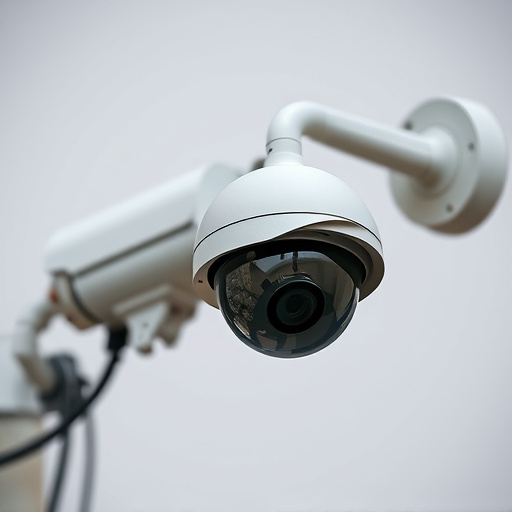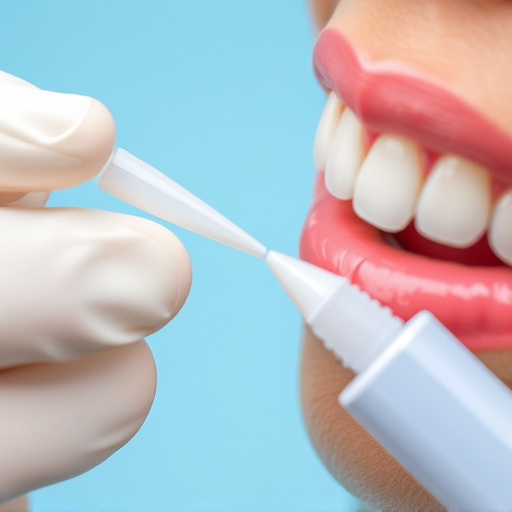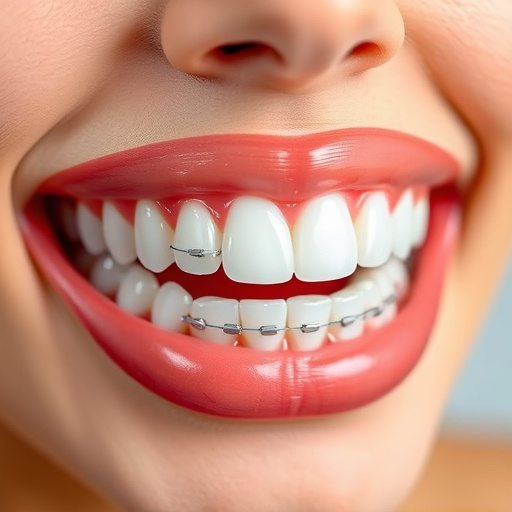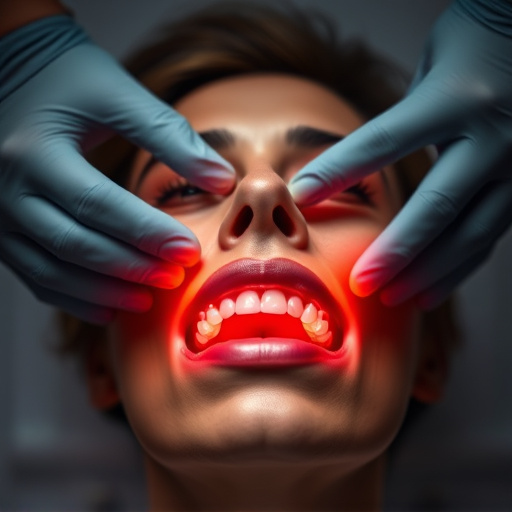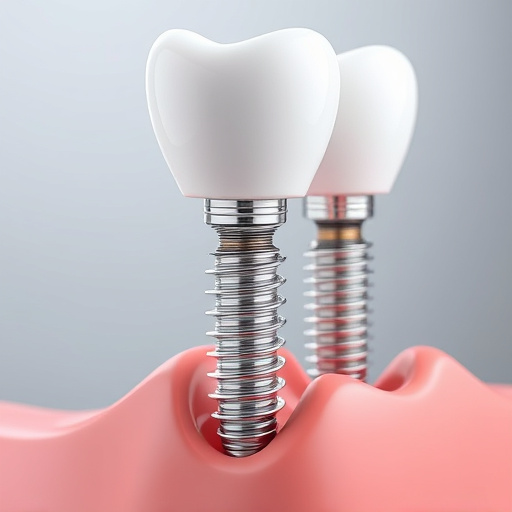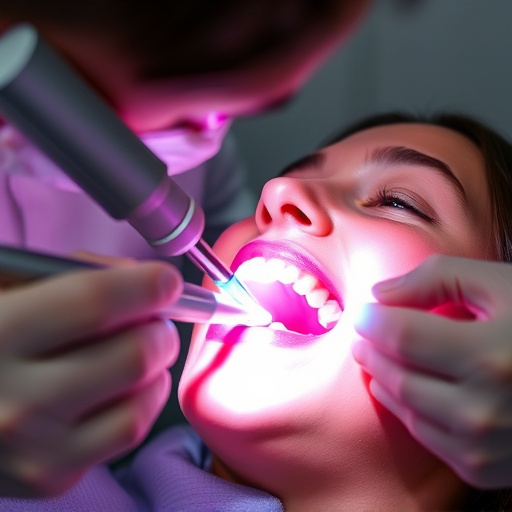3D dental imaging revolutionizes dentistry by providing a detailed, three-dimensional view of oral structures, surpassing traditional 2D x-rays. This technology enables dentists to create precise digital models, accurately diagnose issues like bone loss or nerve damage, and plan complex procedures with enhanced precision. As a result, it offers safer, more effective restorative treatments, improved patient comfort, and higher satisfaction rates for modern dental practices.
“Unveiling the future of dentistry, this article explores the transformative potential of 3D dental imaging in jawbone and nerve mapping. With advanced technology, dentists now possess a precise, detailed view of oral structures, revolutionizing treatment planning.
The benefits are vast: improved surgical accuracy, reduced complications, and enhanced patient outcomes. From understanding complex anatomy to guiding implant surgeries, 3D dental imaging is reshaping dental practices worldwide.”
- Understanding 3D Dental Imaging Technology
- Benefits of Jawbone and Nerve Mapping
- The Process and Applications in Dentistry
Understanding 3D Dental Imaging Technology
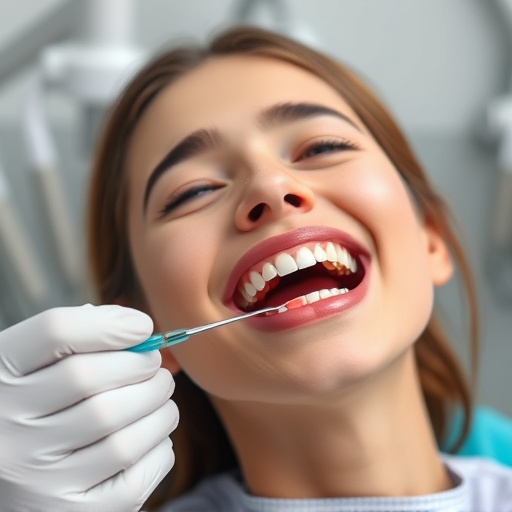
3D dental imaging technology has revolutionized the way dental professionals conduct routine oral exams and plan treatments for restorative dentistry. Unlike traditional 2D x-rays, which offer a limited view of the mouth, 3D imaging provides a comprehensive, three-dimensional view of teeth, jawbones, and nerves. This advanced technology uses specialized scanners to capture detailed images, allowing dentists to create precise digital models of dental structures.
By leveraging 3D dental imaging, dentists can more accurately diagnose conditions like bone loss, nerve damage, or impacted teeth, enhancing the effectiveness of tooth repair procedures. The detailed visualizations enable practitioners to plan treatments with greater precision, ensuring that interventions are minimally invasive and tailored to individual patient needs. This not only improves treatment outcomes but also contributes to patient comfort and satisfaction during restorative dentistry processes.
Benefits of Jawbone and Nerve Mapping
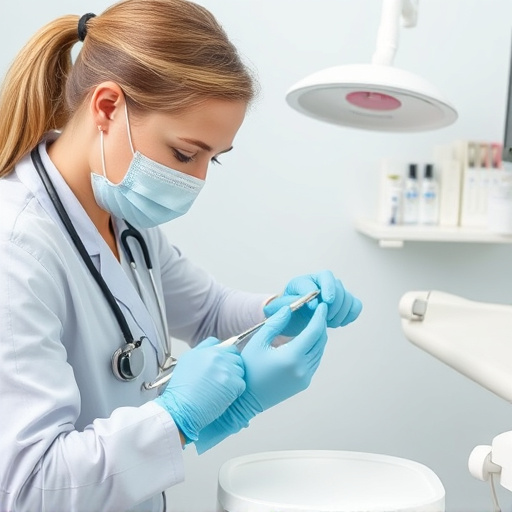
The benefits of jawbone and nerve mapping through 3D dental imaging are significant, particularly in the field of restorative dentistry. By creating detailed, three-dimensional models of a patient’s oral structure, dentists can accurately plan and execute complex procedures with enhanced precision. This advanced technology allows for better understanding of the intricate relationships between teeth, bones, and nerves, ensuring safer and more effective tooth repair and dental bonding processes.
For example, 3D dental imaging enables precise identification of nerve pathways, which is crucial in avoiding damage during surgical interventions or restorative treatments. It also assists in determining the exact amount of bone loss or deformities, facilitating more accurate and tailored solutions. This level of detail not only improves treatment outcomes but also reduces the risk of complications, making it an invaluable tool for modern dental practices.
The Process and Applications in Dentistry
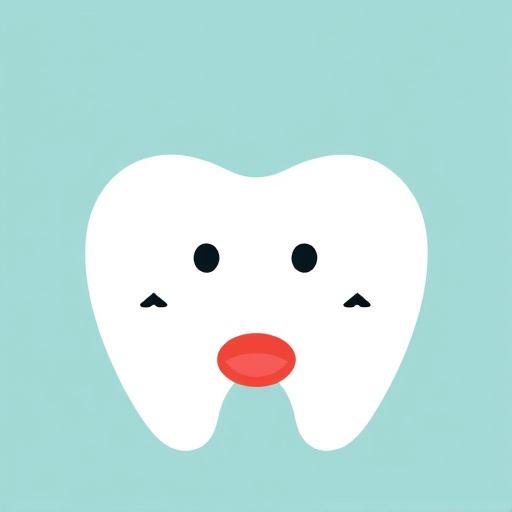
The process of 3D dental imaging involves advanced technology to create detailed, three-dimensional models of the oral cavity, including the jawbone and surrounding nerves. This innovative approach revolutionizes traditional dental practices by offering a comprehensive view of oral structures, enabling dentists to make more precise diagnoses and treatment plans. By capturing intricate details in high resolution, 3D imaging provides a level of accuracy that was previously unattainable with conventional methods.
In dentistry, 3D imaging has numerous applications. It aids in planning dental implants by precisely mapping the jawbone structure, ensuring successful osseointegration. This technology is also invaluable for creating dental crowns and bridges, as it allows dentists to design custom restorations that fit seamlessly. Moreover, in emergency dental care scenarios, 3D imaging can swiftly identify issues like nerve damage or fractures, guiding urgent treatment decisions. Even for cosmetic procedures such as fillings, this advanced imaging ensures precise material placement and optimal aesthetic results.
3D dental imaging, particularly for jawbone and nerve mapping, represents a significant advancement in dental technology. By providing detailed, three-dimensional views of oral structures, this innovative approach enhances diagnostic accuracy and treatment planning. The benefits are clear: improved surgical outcomes, reduced risks associated with invasive procedures, and more effective management of complex dental conditions. As 3D imaging continues to evolve, it promises to further revolutionize dentistry, ensuring better patient care and more precise treatments.

